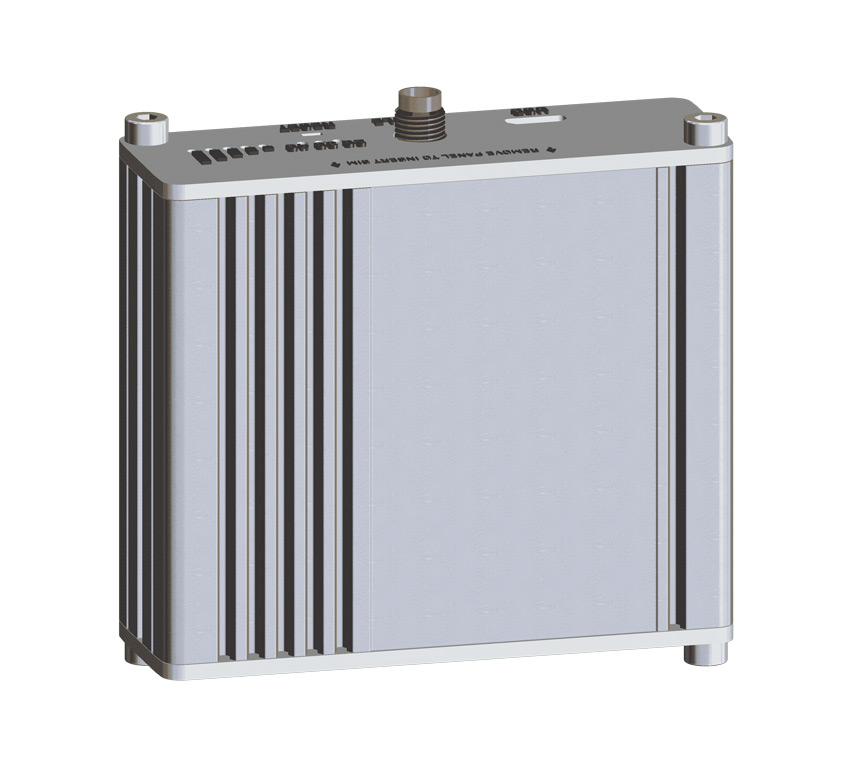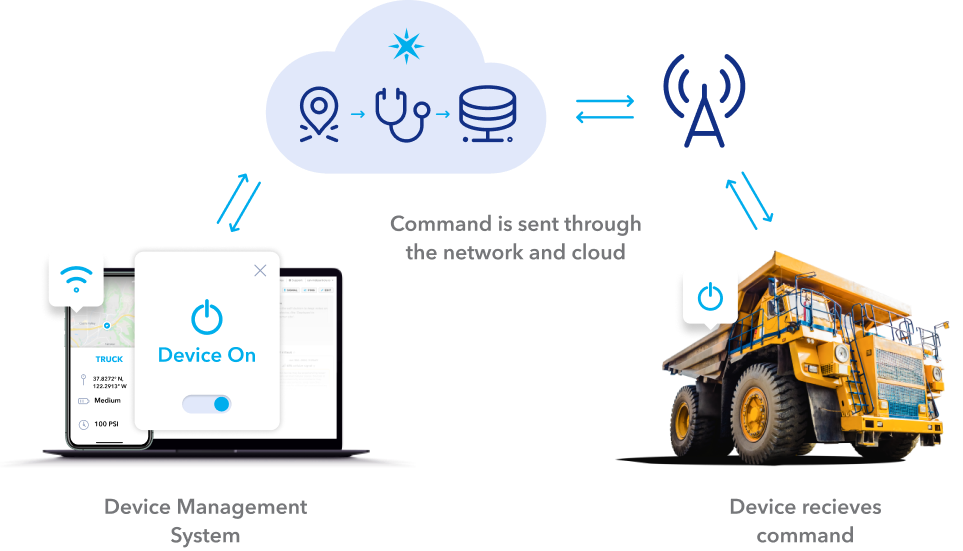Revolutionizing Connectivity: The Ultimate Guide To IoT Remote Control Platform
Imagine a world where everything around you is connected, and you can control it all with just a few taps on your smartphone or a voice command. That’s not science fiction—it’s the power of IoT remote control platforms, and it’s here right now! Whether you’re managing smart home devices, industrial equipment, or even agricultural systems, this technology has transformed the way we interact with our surroundings. Today, we’ll dive deep into the fascinating world of IoT remote control platforms, exploring how they work, why they matter, and how you can leverage them to enhance your lifestyle or business operations.
IoT remote control platforms are no longer a luxury—they’re a necessity in our increasingly connected world. From automating mundane tasks to boosting efficiency, these platforms offer solutions that cater to both individual users and large enterprises. As the Internet of Things (IoT) continues to expand, the demand for robust, scalable, and secure remote control systems is skyrocketing.
In this comprehensive guide, we’ll cover everything you need to know about IoT remote control platforms, from their basic principles to advanced applications. Whether you’re a tech enthusiast, a business owner, or simply someone looking to upgrade your smart home setup, this article will provide valuable insights and actionable tips. Let’s get started!
Table of Contents
- What is an IoT Remote Control Platform?
- Key Components of an IoT Remote Control Platform
- Benefits of Using an IoT Remote Control Platform
- How Does an IoT Remote Control Platform Work?
- Types of IoT Remote Control Platforms
- Popular IoT Remote Control Platforms
- Challenges in Implementing IoT Remote Control Platforms
- Security Considerations for IoT Remote Control Platforms
- The Future of IoT Remote Control Platforms
- Conclusion: Why IoT Remote Control Platforms Matter
What is an IoT Remote Control Platform?
An IoT remote control platform is essentially a system that allows users to monitor and manage connected devices from a distance. These platforms act as the backbone of IoT ecosystems, enabling seamless communication between devices, users, and cloud-based services. They’re designed to handle data collection, processing, and analysis, while also providing users with intuitive interfaces to interact with their devices.
Think about it—whether you’re turning off lights in your living room while you’re at work, adjusting the temperature of your smart thermostat from your phone, or remotely monitoring sensors in a manufacturing plant, IoT remote control platforms make all of this possible. These platforms are versatile, scalable, and adaptable to a wide range of applications, making them an indispensable tool in today’s digital age.
Why IoT Remote Control Platforms Are Essential
IoT remote control platforms address a growing need for connectivity and convenience. As more devices become "smart," the demand for centralized systems that can manage these devices increases. Without such platforms, users would have to juggle multiple apps and interfaces, which could be overwhelming and inefficient. By consolidating control into a single platform, IoT remote control systems simplify the user experience while enhancing functionality.
Key Components of an IoT Remote Control Platform
Every IoT remote control platform consists of several key components that work together to ensure smooth operation. Understanding these components is crucial for anyone looking to implement or use such a platform. Here’s a breakdown of the main elements:
- Devices: These are the "things" in the IoT ecosystem, ranging from smart home appliances to industrial machinery.
- Sensors: Sensors collect data from the environment or devices and send it to the platform for processing.
- Connectivity: This refers to the communication protocols used to connect devices to the platform, such as Wi-Fi, Bluetooth, or cellular networks.
- Cloud Services: The cloud acts as the central hub where data is stored, processed, and analyzed.
- User Interface: This is the front-end of the platform, allowing users to interact with their devices through apps or web dashboards.
Each of these components plays a vital role in the overall functionality of the platform. Together, they create a cohesive system that enables users to control their devices with ease and precision.
Benefits of Using an IoT Remote Control Platform
The advantages of using an IoT remote control platform are numerous and varied, depending on the specific application. Here are some of the most significant benefits:
- Enhanced Convenience: Users can manage their devices from anywhere, at any time, without needing to be physically present.
- Increased Efficiency: Automation features allow users to schedule tasks, set rules, and optimize resource usage.
- Cost Savings: By reducing energy consumption and minimizing downtime, these platforms can help businesses and households save money.
- Improved Security: Many platforms offer advanced security features, such as encryption and two-factor authentication, to protect user data.
- Scalability: IoT remote control platforms can easily accommodate additional devices and users as needs grow.
Whether you’re a homeowner looking to automate your daily routines or a business owner seeking to streamline operations, the benefits of IoT remote control platforms are undeniable.
How Does an IoT Remote Control Platform Work?
To understand how IoT remote control platforms function, let’s break down the process into a few simple steps:
- Data Collection: Sensors and devices gather data from their surroundings and send it to the platform.
- Data Transmission: The collected data is transmitted to the cloud via various connectivity options.
- Data Processing: Once in the cloud, the data is analyzed and processed to extract meaningful insights.
- User Interaction: Users access the platform through an app or web interface to view data, send commands, and make adjustments.
- Device Response: Based on user input or predefined rules, the platform sends commands back to the devices, which then execute the desired actions.
This cyclical process ensures that users always have real-time control over their connected devices, regardless of their location.
Types of IoT Remote Control Platforms
Not all IoT remote control platforms are created equal. Depending on your needs, you may want to consider different types of platforms:
1. Consumer-Focused Platforms
These platforms are designed for individual users who want to manage smart home devices, wearable tech, and other personal gadgets. They typically prioritize ease of use and integration with popular devices.
2. Enterprise-Focused Platforms
Enterprise platforms cater to businesses and organizations, offering robust features for managing large-scale IoT deployments. These platforms often include advanced analytics, security, and scalability options.
3. Industry-Specific Platforms
Some platforms are tailored to specific industries, such as agriculture, healthcare, or manufacturing. These platforms incorporate industry-specific features and functionalities to address unique challenges and requirements.
Choosing the right type of platform depends on your specific needs and goals. Whether you’re a homeowner or a business owner, there’s an IoT remote control platform out there that’s perfect for you.
Popular IoT Remote Control Platforms
There are many IoT remote control platforms available on the market, each with its own strengths and weaknesses. Here are some of the most popular ones:
- Amazon AWS IoT: A cloud-based platform that offers scalable solutions for managing IoT devices.
- Microsoft Azure IoT: Known for its strong integration with other Microsoft services, this platform provides robust tools for building IoT applications.
- Google Cloud IoT Core: This platform leverages Google’s powerful cloud infrastructure to deliver secure and reliable IoT solutions.
- IBM Watson IoT Platform: With advanced analytics and AI capabilities, this platform is ideal for businesses looking to gain deeper insights from their IoT data.
- ThingWorx: A platform designed for industrial IoT applications, offering features like predictive maintenance and asset management.
These platforms are just a few examples of the many options available. When choosing a platform, it’s important to consider factors like cost, ease of use, and compatibility with your existing systems.
Challenges in Implementing IoT Remote Control Platforms
While IoT remote control platforms offer numerous benefits, they also come with their fair share of challenges. Here are some of the most common obstacles:
- Interoperability: Ensuring that devices from different manufacturers can communicate seamlessly can be difficult.
- Security: Protecting sensitive data and preventing unauthorized access is a top priority for any IoT platform.
- Scalability: As the number of connected devices grows, platforms must be able to handle the increased load without sacrificing performance.
- Cost: Implementing and maintaining an IoT remote control platform can be expensive, especially for large-scale deployments.
Addressing these challenges requires careful planning, robust security measures, and scalable solutions that can grow with your needs.
Security Considerations for IoT Remote Control Platforms
Security is one of the most critical aspects of IoT remote control platforms. With so many devices connected to the internet, the potential for cyberattacks is significant. Here are some best practices for ensuring the security of your IoT platform:
- Encryption: Use end-to-end encryption to protect data in transit and at rest.
- Authentication: Implement strong authentication mechanisms, such as two-factor authentication, to verify user identities.
- Regular Updates: Keep your platform and devices up to date with the latest security patches and firmware updates.
- Access Controls: Limit access to sensitive data and functions to authorized users only.
By prioritizing security, you can help ensure that your IoT remote control platform remains safe and reliable.
The Future of IoT Remote Control Platforms
The future of IoT remote control platforms looks bright. As technology continues to evolve, we can expect to see even more advanced features and capabilities. Some trends to watch out for include:
- Artificial Intelligence: AI-powered platforms will be able to learn user preferences and automate tasks more effectively.
- 5G Connectivity: The rollout of 5G networks will enable faster and more reliable communication between devices.
- Edge Computing: Processing data closer to the source will reduce latency and improve performance.
- Sustainability: IoT platforms will increasingly focus on reducing energy consumption and promoting environmentally friendly practices.
As these trends unfold, IoT remote control platforms will continue to play a vital role in shaping the connected world of tomorrow.
Conclusion: Why IoT Remote Control Platforms Matter
In conclusion, IoT remote control platforms are revolutionizing the way we interact with our surroundings. They offer unparalleled convenience, efficiency, and security, making them an essential tool for both individuals and businesses. By understanding the key components, benefits, and challenges of these platforms, you can make informed decisions about how to incorporate them into your life or operations.
So, what are you waiting for? Dive into the world of IoT remote control platforms and discover the endless possibilities they offer. And don’t forget to leave a comment, share this article, or explore other resources on our site to learn more about the exciting world of IoT!


